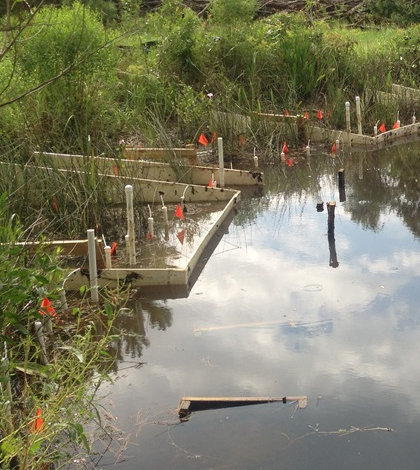U. Alabama Scientists Develop New Weir Approach For Wetland Studies

Researchers installed adjustable enclosures near the shoreline to simulate low, intermediate and high flooding levels. (Credit: Dr. Eric Sparks / Mississippi State University)
Researchers at the University of Alabama have come up with a new method to study wetland dynamics, according to a release from the school. The method relies on constructing weirs, which the scientists say can also be used in investigations studying sea level rise.
Much of the hardware needed to use weirs for wetland studies can be easily sourced. All that’s really needed to put one up is sheets of plastic, wood and some nails or screws. From there, the three-sided constructions, with one side being replaced by shorelines, are straightforward to install.
The method was developed at the National Estuarine Research Reserve at Alabama’s Mobile Bay while U. Alabama scientists were looking for ways to study the effects of flooding on wetlands. The scientists note that using weirs is comparable to using mesocosms for wetland research, but say that their weir approach is superior because mesocosm creation typically disturbs marsh ecosystems.
Full findings of the work resulting in the new method are published in the journal Methods in Ecology and Evolution.
Top image: Researchers installed adjustable enclosures near the shoreline to simulate low, intermediate and high flooding levels. (Credit: Dr. Eric Sparks / Mississippi State University)




0 comments